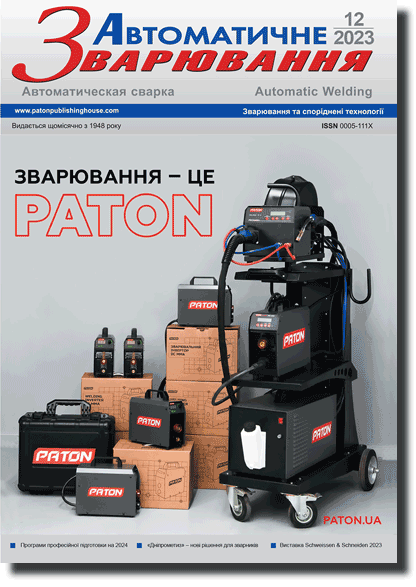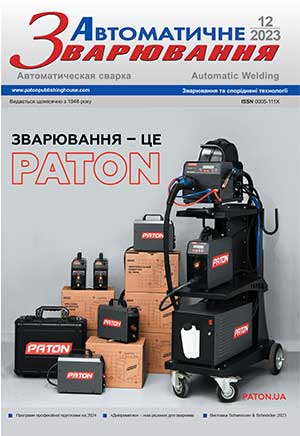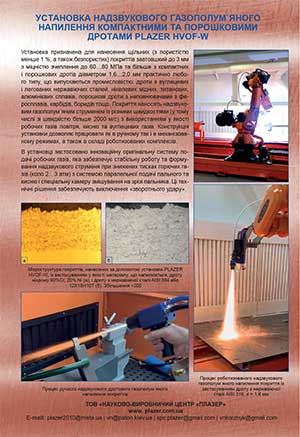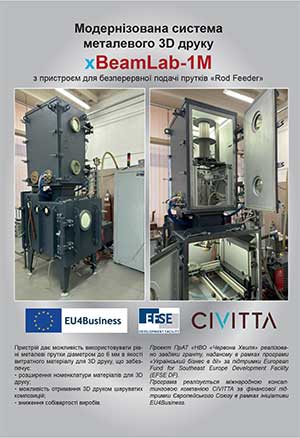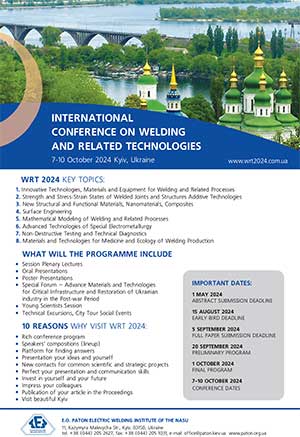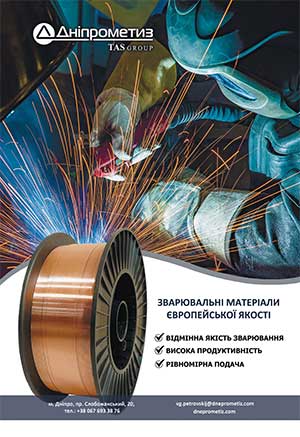| 2023 №12 (09) |
DOI of Article 10.37434/as2023.12.01 |
2023 №12 (02) |
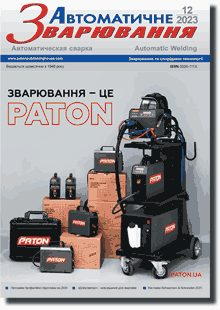
"Avtomatychne Zvaryuvannya" (Automatic Welding), #12, 2023, pp. 3-12
Influence of cooling rate on microstructure and phase composition of HAZ of duplex (DSS) 2205 STEEL in wet underwater welding
S.Yu. Maksymov, G.V. Fadeeva, V.A. Kostin, A.A. Radzievskaya, D.V. Vasilyev
E.O. Paton Electric Welding Institute of the NAS of Ukraine. 11 Kazymyr Malevych Str., 03150, Kyiv, Ukraine. E-mail: office@paton.kiev.uaThe article shows the results of the analysis of changes in the microstructure and volumetric particles of phase components of HAZ metal in modelling with the use of the Gleble-3800 device of welding thermal cycles, which are inherent in wet underwater welding and welding in air. The value of cooling rate of different areas of weld metal in wet underwater welding and welding in air was determined. It is shown that as a result of cooling impact of water environment, the cooling rate in wet underwater welding is almost by an order higher than that of welding in air (W13/8 = 8.21 ºС/с – air, in the middle of the weld, and in wet underwater welding it is accordingly W13/8 = 81.70 ºС/с in the middle of the weld, W13/8 = 165.85 ºС/с at the beginning of the weld and W13/8 = 320,51 ºС/с in the weld crater). The change in volumetric particles of phase components of ferrite, austenite and excess phases (chromium Cr2N nitride) was determined in the microstructure of HAZ metal depending on the cooling rate. Phase transformations almost completely occur in the high-temperature heat-affected-zone (HHAZ) in the temperature range T = 1300…800 ºС. Contribution of low-temperature heat-affected-zone (LHAZ), temperature range T = 800…500 °C on the change in phase components is negligible. The amount of ferritic and austenitic components and especially the morphology of austenite in the microstructure of HHAZ depend on the cooling rate, as well as the amount of precipitation of excess phases (probably chromium Cr2N nitrides). Ref. 13, Tabl. 5, Fig. 8.
Keywords: duplex steels, wet underwater welding, input energy, cooling rate, phase composition, austenite, ferrite, microstructure in HAZ, HAZ modelling, thermal welding cycle, Gleeble
Received: 06.09.2023
References
1. Verma, I., Taiwade, R., R.V (2017) Effect of welding processes and conditions on the microstructure, mechanical properties and corrosion resistance of duplex stainless steel weldments - A review. Journal of Manufacturing Processes, 25, 134-152. https://doi.org/10.1016/j.jmapro.2016.11.0032. Bermejo, V.M.A., Hurtig, K., Hosseini, V.A. et al. (2016) Monitoring thermal cycles in multi-pass welding. In Proceedings of the 7th International Swedish Production Symposium (SPS-16), Lund, Sweden, 25-27 October.
3. Bermejo, V.M.A., Hurtig, K., Karlsson, L., Svensson, L.E. (2017) A step forward in understanding superduplex multipass welds by monitoring thermal cycles. In Proceedings of the 70th IIW Annual Assembly, Shnghai, China, 28 June.
4. Bermejo, M.A.V., Daniel, E., Hurtig, K., Karlsson, L. (2019) A New Approach to the Study of Multi-Pass Welds-Microstructure and Properties of Welded 20-mm-Thick Superduplex Stainless Steel. http://www.researchgate.net/publication/ 331715232.
5. Hosseini, V.A., Karlsson, L., Engelberg, D., Wessman, S. (2018) Time-temperature - precipitation and property diagrams for super duplex stainless steel weld metals. Weld. World, 62, 517-533. https://doi.org/10.1007/s40194-018-0548-z
6. Hsienh, R.-J., Liou, H.-Y., Pan, Y.-Ts. (2001) Effects of Cooling Time and Alloying Elements on the Microstructure of the Gleeble-Simulated Heat-Affected Zone of 22% Cr Duplex Stainless Steels. Journal of Materials Engineering and Performance, 10(5), 526-536. https://doi.org/10.1361/105994901770344665
7. Wu, T.-h., Wang, J.-j., Li, H.-b et al. (2018) Effect of heat input on austenite microstructural evolution of simulated heat affected zone in 2205 duplex stainless steel. https://doi.org/10.1007/s42243-018-0134-z
8. Lippold, J.C., Varol, I., Baeslack, W.A. (1994) The Influence of Composition and Microstructure on the HAZ Toughness of Duplex Stainless Steels at -20 ºC. Welding Research Supplement I, 75-79.
9. Zhou, Y., Zou, D., Li, K. et al. (2018) Effect of Cooling Time on Microstructure and Properties of 2507 Super Duplex Stainless Steel Weldi-ng Heat-Affect Zone. Materials Science Forum ISSN: 1662-9752, 940, 5358. Trans Tech Publications, Switzerland. https://doi.org/10.4028/www.scientific.net/MSF.940.53
10. Grigorenko, G.M., Kostin, V.A., Orlovsky, V.Yu (2008). Modern transformation modeling capabilities austenite in welds of low-alloy steels. Avtomatich. Svarka, 3, 31–33 [in Russian].
11. Hasui, A., Suga, Y. (1980) On cooling of Underwater Welds. Trans. of the Japan welding Society. (IWS). Bol. 11, 1. April.
12. Geipl, H. (1989) MAGM-Schweissen von Rorrosions bestӓndign Duplex-Stahlen 22Cr5(9)Ni3Mo. Entfluss von schutzgas- und werfahrenvarianten. Linde - Sonderdruck. №146, Hӓllriegels - kreuth.
13. Hu, Y., Shi, Y., Shen, X., Wang, Zh. (2017) Microstructure, Pitting Corrosion Resistance and Impact Toughness of Duplex Stainless Steel Underwater Dry Hyperbaric Flux-Cored Arc Welds. Materials, 10, 1443, www.mdpi.com/journal/materials. https://doi.org/10.3390/ma10121443
Advertising in this issue:
The cost of subscription/purchase order journals or individual articles
| Journal/Currency | Annual Set | 1 issue printed |
1 issue |
one article |
| TPWJ/USD | 384 $ | 32 $ | 26 $ | 13 $ |
| TPWJ/EUR | 348 € | 29 € | 24 € | 12 € |
| TPWJ/UAH | 7200 UAH | 600 UAH | 600 UAH | 280 UAH |
| AS/UAH | 1800 UAH | 300 UAH | 300 UAH | 150 UAH |
| AS/USD | 192 $ | 32 $ | 26 $ | 13 $ |
| AS/EUR | 180 € | 30 € | 25 € | 12 € |
| SEM/UAH | 1200 UAH | 300 UAH | 300 UAH | 150 UAH |
| SEM/USD | 128 $ | 32 $ | 26 $ | 13 $ |
| SEM/EUR | 120 € | 30 € | 25 € | 12 € |
| TDNK/UAH | 1200 UAH | 300 UAH | 300 UAH | 150 UAH |
| TDNK/USD | 128 $ | 32 $ | 26 $ | 13 $ |
| TDNK/EUR | 120 € | 30 € | 25 € | 15 € |
AS = «Automatic Welding» - 6 issues per year;
TPWJ = «PATON WELDING JOURNAL» - 12 issues per year;
SEM = «Electrometallurgy Today» - 4 issues per year;
TDNK = «Technical Diagnostics and Non-Destructive Testing» - 4 issues per year.





